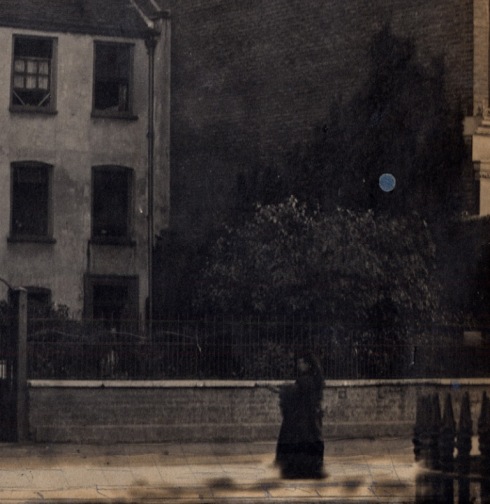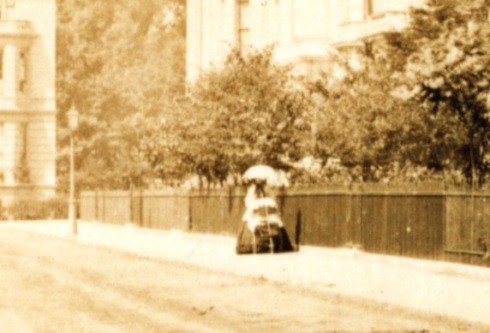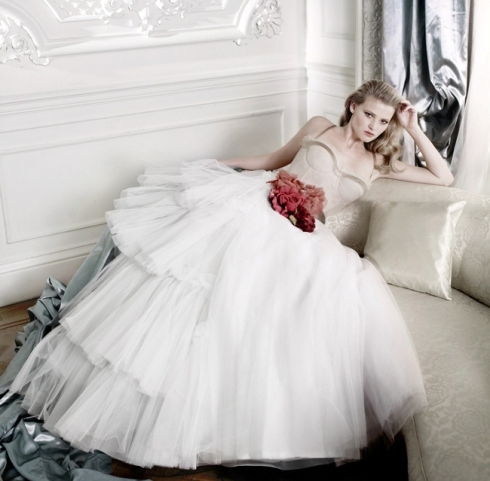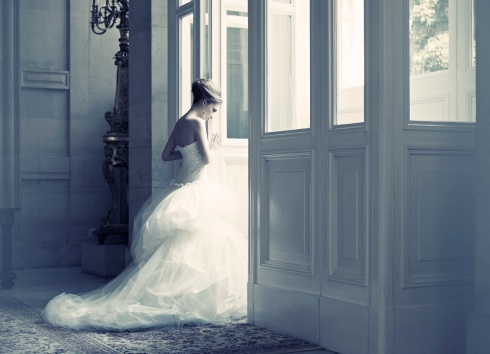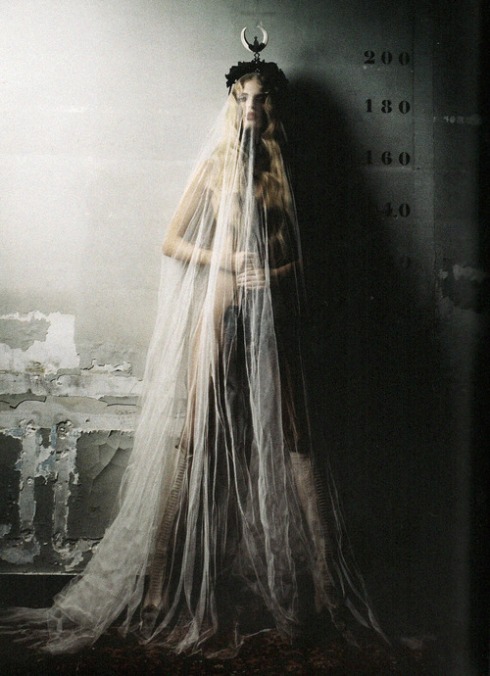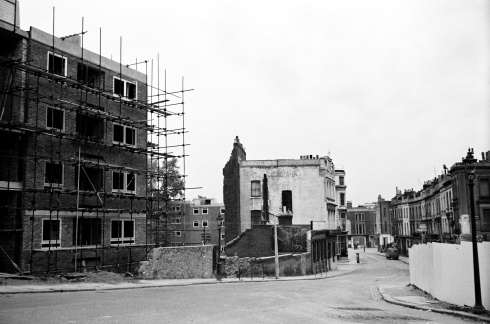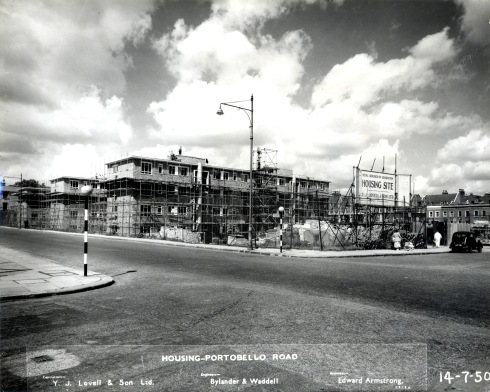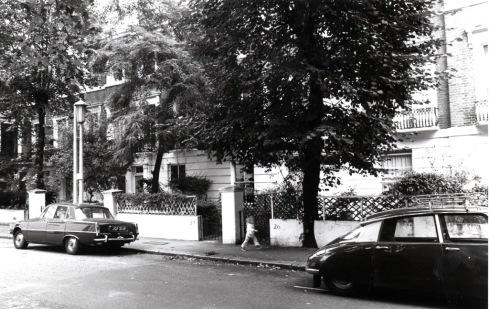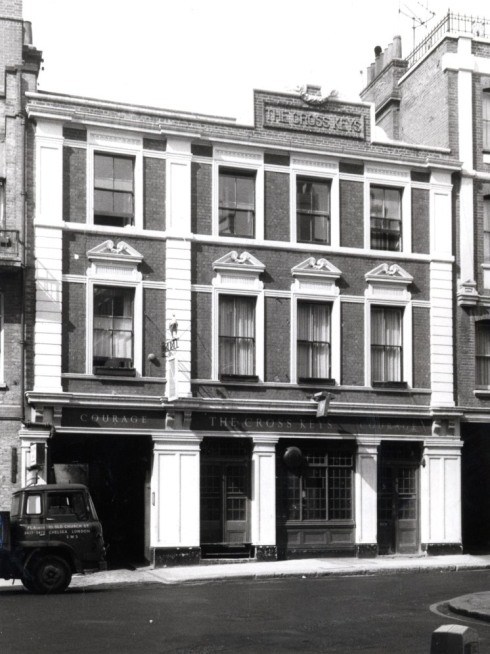Like many working photographers in his heyday, the 1950s and 1960s John Bignell took photographs of women as portraits, for newspapers, for fashion shoots, in street photography, in “art” photos, individual commissions and even what we now euphemistically call glamour photography. For this post I’ve been looking through some of the lightly categorized boxes of prints we have (“London”, “unidentified people”, “identified people”) to try and find some of his less well known work. Some of these images are finished pieces of work, some look like he was just playing around. All of them I hope are intriguing in their own way or evocative of a particular time.
This is an example. Three young women, possibly models, getting ready for a fashion shoot or a show, which Bignell thought was worth printing.
This one is an outdoor shot.
 I can’t quite place the background, but near a river, the woman possibly on a boat. Whover the lady is, it’s a good picture of her.
I can’t quite place the background, but near a river, the woman possibly on a boat. Whover the lady is, it’s a good picture of her.
The contact sheet below has a recognizeable background.
The houseboats near Battersea Bridge, with the Battersea shore in the distance. I assume that Bignell was following her around taking pictures for a magazine pr newspaper article but I don’t know who she is. As with all these unknowns I hope someone who reads this post will have some ideas. If it’s someone you know or used to know it could be a pleasant surprise.
I do know this lady:
It’s Thea Holme, who wrote a history of Chelsea published in 1972. The book is now out of print but available through second hand dealers. I still consult it from time to time. Again, the contact prints look like they are going to accompany an article. Several show the writer “at work” writing or researching.
There are portraits in the boxes of prints with nothing on the back but a date or an enigmatic note.
This one just says 1955. A woman very much of that decade as the next one is not.
There is some quality of familiarity in some of these pictures which makes me think that Bignell was good at making his subjects relax. I feel that he knew them, so therefore I must know them, and their identities are just out of reach.
This is one out of a trio of pictures.
I’ve just called them “Woman hat grass”.
Bignell liked to work with props. Here’s another hat picture.
The same woman? The same hat definitely.
This is another kind of prop.
There are several shots of Irina Polkiakova, publicity pictures from 1957 for a burlesque performer. As I’ve mentioned in a previous post Bignell knew Paul Raymond, who put on burlesque shows at the Chelsea Palace and at his own Raymond Revue bar in Soho. Bignell has left us quite a few examples of his glamour work, although these are almost innocuous by modern standards.
Dorothy Insull in 1959. It’s interesting that Bignell has often noted the names of his models in this kind of work. Presumably he thought he would never need to remember the names of the women he knew socially. Some of the erotic pictures simply seem odd now – a nude woman sitting at a typewriter, a naked woman in a doorway picking up a milk bottle – some of them obviously tongue in cheek – a naked woman holding a slip or a nightdress in one hand, a box of the washing powder Omo (older readers may remember this product) in the other, with the caption “brighter than white” on the back. I’ve refrained from posting those last three because we’re no longer so casual about these matters, or as innocent as people were in Bignell’s time. However, I will show you one of his arty nudes. Look away now if easily offended.
That one might also fit into a set of weird/esoteric Bignell images.
As might the last two images, of a woman Bignell hasn’t named but I feel we should know.
My colleague Tim has pointed out that the woman looks like one or both of the women in the painting. Could this be a photograph of an artist’s model and the painting of her? In the second image she adopts a model’s pose.
Possibly the pose of the male figure in the background. Is he another picture of her?
Surely someone knows who she is? I’ll leave that one with you. I’ll just note as I have before that Bignell hasn’t made it easy for us in terms of date, names and places. Fortunately the pictures themselves are always worth examination.
Postscript
I was preoccupied with medical matters again this week so I returned to Bignell who can always be relied upon to provide images which don’t need a great deal of commentary.
Postscript to the Postscript
The comment from London Remembers below points out that the woman and sundial picture is reversed which I hadn’t noticed. I tried flipping it and thought it looked better that way. But why?
Any thoughts on the location?
Postscript to the postscript to the postscript (Feb 2017)
A researcher has been looking at some of Bignell’s pictures and as a result I can now say that the woman with the sundial was called Gerda Ronn. Bignell took many pictures of her including one in which she is fully clothed. The sundial picture probably dates from 1954. Quite a different era in terms of attitudes to outdoor nudity.













































